Franklin County Fire Protection District #3





2022 ANNUAL REPORT

MISSION STATEMENT
❖Protect lives and property

❖Treat all with care
❖Act with integrity







MISSION STATEMENT
❖Protect lives and property

❖Treat all with care
❖Act with integrity
Page 2 Letter from the Chief
Page 3 District Overview
Page 4 Fire District Service Area
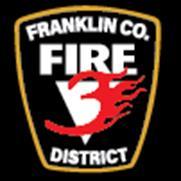
OPERATIONS
Page 5 Break Down of Major Incident Types
Page 6 Description of Incident Types
Page 7 Incident Trends
Page 8 Automatic and Mutual Aid
Page 9 Fire Incident Loss Data
Page 10 NFPA 1720 Response Times

Page 11 NFPA 1720 Zone Descriptions
Page 12 Apparatus Compliance Statistics
Page 13 Apparatus Compliance Statistics (Cont.)
Page 14 Apparatus Compliance Statistics (Cont.)
Page 15 Apparatus Compliance Statistics (Cont.)
Page 16 Staffing
Page 17 TRAINING
Page 18 PUBLIC EDUCATION
Page 19 CAPITAL PURCHASES
ADMINISTRATION
Page 20 Financial, Capital Expense and Reserves
Page 21 Annual Expenditures
Page 22 Grants
Page 23
Anticipated Annual Revenue
Page 24 Summary

On behalf of the members of Franklin County Fire Protection District #3, I am pleased to present the Fiscal-Year 2022 Annual Report. The annual report provides an overview of the past year as well as the District in general. We take tremendous pride in sharing our successes and interactions with our community
Franklin County Fire Protection District #3 provides the best quality fire, emergency, medical, disaster response and fire prevention services to the citizensof our communities, at the lowest cost possible while supporting creativity, innovation, growth and stability. We are continually striving to better equip our District and provide firefighter training opportunities in an effort to increase both the safety of the residents we serve and the firefighters that respond.
Emergency call volumes have increased 49 percent since 2018, and the demands for service and hours spent by career and volunteers on the emergency responses continue to increase. The needs of our community have grown significantly, and I am proud of the hard work and commitment our team puts in managing these sometimes long and complex emergencies
Fire District 3 is considering asking voters for a fire levy lid lift in the fall on 2023 There will be a public process before any final decision is made and I want to share a list of fire district needs with you here. Revenue from a lid lift would fund one additional full-time firefighter and two seasonal firefighters during wildland fire season. It would replace firefighter gear, renovate Station 33 on Columbia River Road (Block 1) to allow for 24hour staffing, and replace an ambulance and water tender. The lid lift would also fund backup power at our fire stations so we can continue to operate if a natural disaster should occur. These improvements are necessary to save lives and property as well as maintain the Fire District’s risk rating which is associated with what you pay in homeowner insurance premiums.
The membersof Franklin County Fire Protection District #3 remain committed to ourmotto “Caring, Dedicated, Professional”. We look forward to another year of working for the health and safety of your family and appreciate your support!

Sincerely,
Michael C. Harris Fire ChiefFranklin County Fire Protection District #3 (FCFD#3) protects 205 square miles and 8,225 people with a seasonal transient farm worker population of about 1,800. FCFD#3 is a combination district operating 4 stations. Our current staffing for administration consists of a paid Fire Chief, and an Administrative Assistant. Operations is staffed by a career Captain responsible for training and safety, a career Firefighter Maintenance Supervisor, 5 career Firefighter/EMT, and a career Firefighter/Paramedic operating on a 24 hour shift, which are part of the International Association of Firefighters Local 4965. Volunteer operations consist of 4 Resident Firefighters, 48 Paid On-Call Responders (“Volunteers”); 14 are Firefighter/EMT’s, 11 are Firefighters, 6 Support Firefighters (wildland qualified only), 5 Medical Responders (EMT and AEMT) and 12 non-line qualified Logistics.

FCFD#3 is in the heart of the Columbia Basin in Southeast Washington State and includes unincorporated portions surrounded by the city limits of Pasco. Our county has a population of 94,347 with an average size household of 3.36 persons per residence1 This is an agribusiness- dependent region which grows a large amount of the nation’s potatoes, wheat, corn, apples, cherries and mint. FCFD#3 helps to protect many major components of critical infrastructure that include: the planning zone for the Hanford Nuclear Reservation operated by the US Department of Energy, bulk fuel, chemical/fertilizer storage and distribution, natural gas pipeline, bridges, interstate freeways, a major railway corridor, barge shipping terminals, federal irrigation resources, hydroelectric projects including a major dam operated by the US Army Corps of Engineers, a major railroad switch yard, regional commercial airport, communications facilities, and dozens of food processing plants. Pasco is the county seat and the largest city and economic center in Franklin County.
With the unique nature of our fire district providing the same primary fire and emergency medical services provided by a city, the District also has additional responsibilities usually afforded by other departments of a municipal government. Some of these additional duties are payroll, finance, purchasing, facilities, human resources, public works, as well as all public education and outreach. These duties are in addition to the daily duties necessary to the operation of the District such as emergency response, apparatus maintenance, tracking and maintaining small works roster and bids, inventory control and data gathering and reporting. Due to the stand-alone nature of the fire district, we do it all in order to succeed and provide the best service to our residents.
1Source: Indexmundi.com
FIRE DISTRICT SERVICE AREA



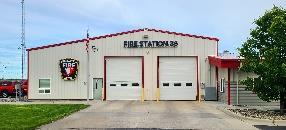


Yellow shade indicates Contract Fire Protection area for Bureau of Land Management Fire Station #31







The Fire District responded to 804 calls for service in 2022, up 16 calls over 2020. Part of the change in call volume was related to an increase in EMS calls (increase of 95 calls). The Fire District’s five-year trend continues to increase to over 800 total alarms per year.




Fires: Includes all fires in buildings and mobile homes, vehicles, mobile properties, recreational vehicles and natural vegetation (wildland).

Overpressure Rupture, Explosion, Overheat (no fire): Excludes steam mistaken for smoke. Includes overpressure rupture from steam or a boiler where the Fire District was called to assist.
Rescue and Emergency Services: Includes medical assists, motor vehicle accidents with injuries and no injuries, lock-ins, search for person and all rescues.
Hazardous Condition (no fire): Includes chemical and radiological releases with no fire, hazardous electrical condition, hazardous building condition with no rescue and standby for hazardous conditions.
Service Call: Includes person in distress, water removal, animal rescue, public service assistance, unauthorized burning and cover assignment or move-up such as standby at a fire station.
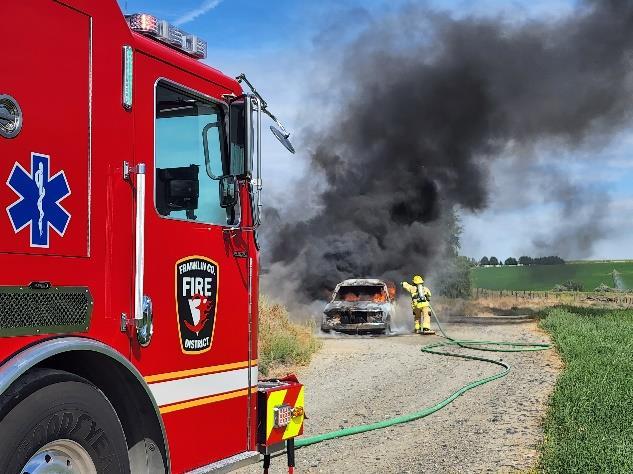
Good Intent Call: Includes dispatched and cancelled en route, authorized controlled burning, vicinity alarms (not fire alarms), smoke scare and no incident found on arrival.

False Alarm and False Call: Includes malicious alarms, bomb scares, and fire alarm system malfunctions.
Severe Weather and Natural Disaster: Includes severe weather or natural disaster standby, earthquake, flood and windstorm/tornado damage assessment.
Special Incident Type: Includes citizen complaint, code or ordinance violations and miscellaneous uncategorized incident types.






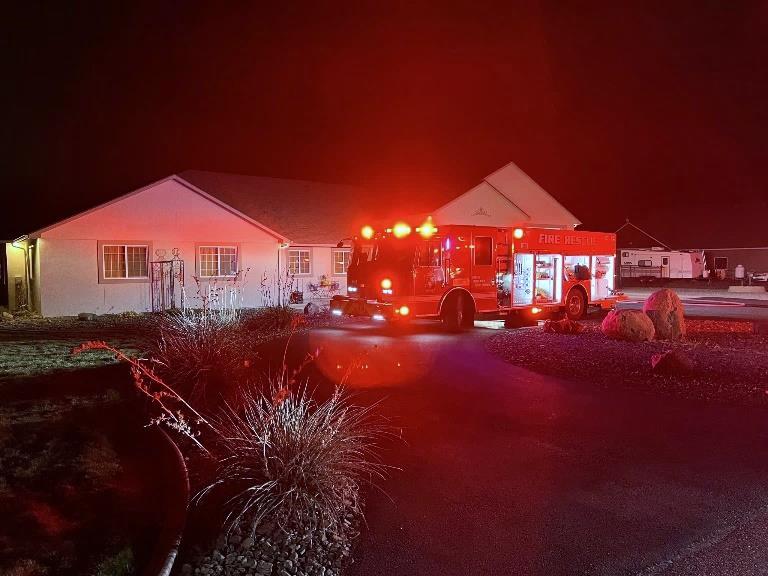


Table 1
NFPA 1720 Response Times
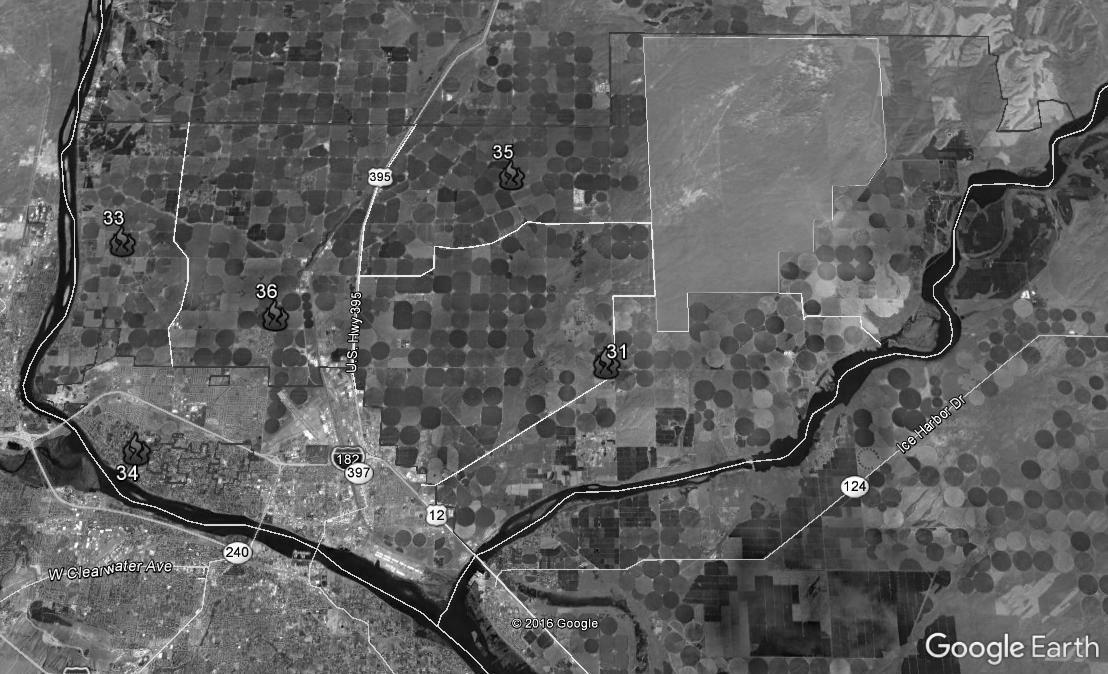
NFPA 1720 – Standard for the Organization and Deployment of Fire Suppression Operations, Emergency Medical Operation, and Special Operations to the Public by Volunteer Fire Departments.

Suburban Zones are classified as having a population of 500-1000 people per square mile. NFPA recommendation is for 10 firefighters to assemble an attack on scene in 10 minutes 80% of the time.
First in engine reliability is met only 50% of the time with 3-4 Firefighters. Additional autoaid engines are required to meet the staffing standard of 10. Engines responding to Suburban Zones did not meet the NFPA 1720 recommendation.
**Aid units responding to EMS events have to meet the requirement of 15 minutes or less 80% of the time per South Central Region EMS & Trauma Care Council Procedures.
Rural Zones are classified as having a population of <500 people per square mile. NFPA recommendation is for 6 firefighters to assemble an attack on scene in 14 minutes 80% of the time.
First in engine reliability is met only 50% of the time with 3-4 Firefighters. Additional autoaid engines are required to meet the staffing standard of 6. Engines responding to Rural Zones did not meet the NFPA 1720 recommendation.

**Aid units responding to EMS events can meet the requirement of 45 minutes or less 80% of the time per South Central Region EMS & Trauma Care Council Procedures.
Remote Zones are classified as having a travel distance of 8 miles or more. NFPA recommendation is for 4 firefighters to assemble an attack on scene in a time determined by the agency having jurisdiction (AHJ) 80% of the time. In the case 25 minutes was used.
Wilderness Zones are classified as having no population. NFPA recommendation is for 4 firefighters to assemble an attack on scene in a time determined by the agency having jurisdiction (AHJ) 80% of the time. In the case 45 minutes was used.
**Aid units responding to EMS events can meet the requirement of “as soon as possible” 80% of the time per South Central Region EMS & Trauma Care Council Procedures. In the case 25 minutes was used.
Four-person daytime staffing, the lack of volunteers available to respond during all hours and a turnout time (time of alarm to time in route) in excess of 4 minutes contributes to the Fire District not meeting NFPA 1720 Recommendations Standard for the Organization and Deployment of Fire Suppression Operations, Emergency Medical Operation, and Special Operations to the Public by Volunteer Fire Departments.


**Indicates EMS response is not following NFPA 1720 Guidelines but Washington State South Central Region EMS & Trauma Care Council Procedures.
For Effective Fire Ground Operations. An engine company responding to a suburban zone has to have 10 firefighters assembled in 10 minutes 80% of the time to effectively initiate fire ground operations per NFPA 1720 Table 1.
However, the Aid Unit and Duty Officer which is an Emergency Medical Technician arrives 80% of the average time under the required state trauma response guidelines to initiate aid.


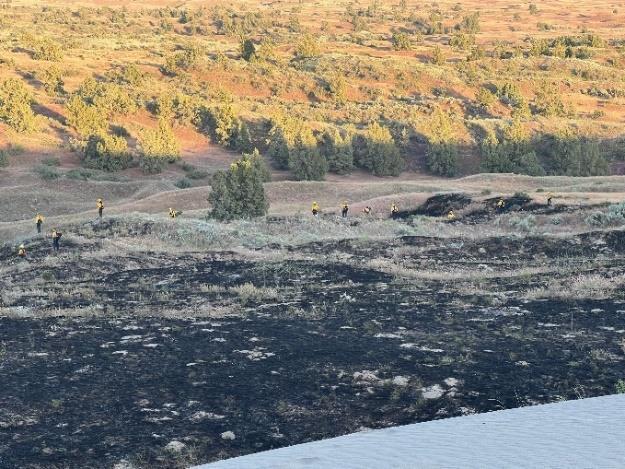



The District operates with one Fire Chief, an Administrative Assistant, 8 career shift Firefighter/EMT or Paramedic who staff the station 24 hours a day, seven days a week including holidays. The fire district had 3 shifts and the firefighters work a 48 hour on, 96 hour off schedule.

Our 48 volunteers remain the backbone of the District Without these men and women our District would have to look at new revenue sources that would greatly burden our citizens or dramatically reduce our services. These individuals must be recognized for the everincreasing time they spend to meet minimum training and response status.
Our own volunteer Jose Garcia received the Life Saving Award at the Franklin County Sheriff’s Office for arriving first and performing CPR at an accident scene on June 12th saving the individuals life.

The Resident Firefighter Program started in 2014 after we moved into the remodeled Fire Station on Rd 36. Resident firefighters are young men and women that live in the fire station, perform duties such as maintenance, cleaning and responding to alarms. In return, our Resident Firefighters receive all the training to be an efficient and safe firefighter in structure and wildland firefighting, become Emergency Medical Technicians (EMT) and are eligible for reimbursement for college education at Columbia Basin College.
Our four resident firefighters use the dorms at the fire stations as their primary residence and cover shifts, so we always have one or two firefighters on duty for the weekends, evenings and holidays to supplement the volunteer firefighters that respond during those hours. Our goal with use of the career day staff, volunteer firefighters and resident firefighters is to have 24-hour coverage for the ambulance a majority of the time.


Each year Franklin County Fire Protection District #3 places a large amount of training focus on health and safety of the volunteer and career staff. The largest contributing factor to firefighter deaths nationwide is heart attacks, followed by motor vehicle accidents; both private vehicles and apparatus responding to and from incidents and training. Therefore, we promote physical fitness, require bi-annual physicals and focus on drivers training.

Recruit training consists of Basic Wildland Firefighter, Emergency Vehicle Incident Prevention (EVIP), Structural Firefighting and Hazardous Materials Awareness and Operations. All of our in house or joint recruit training efforts are held at the Training Center in Kennewick with neighboring fire districts.

Annual training in the fire stations consists of refresher training in wildland fire and training in basic firefighting skills as required by the Washington State Safety Standards for Firefighters (WAC 296-305) and the National Fire Protection Association (NFPA) and Emergency Medical Services Ongoing Training and Evaluation Program (OTEP). In 2022, volunteer and career firefighters had a total of 1689 hours of training.



The Fire District continues to reach out to the community through participation with our community partners We continue to assist our neighbor Pasco Fire Department with public education programs We share resources across the city and public events
The Fire District continues a county-wide addressing program that was started in 2016 to place fiberglass address posts at driveways and in front of residents’ homes without visible addresses. Funding for the project came from grant dollars passed through Franklin County Emergency Management under the Community Wildland Fire Protection Program.
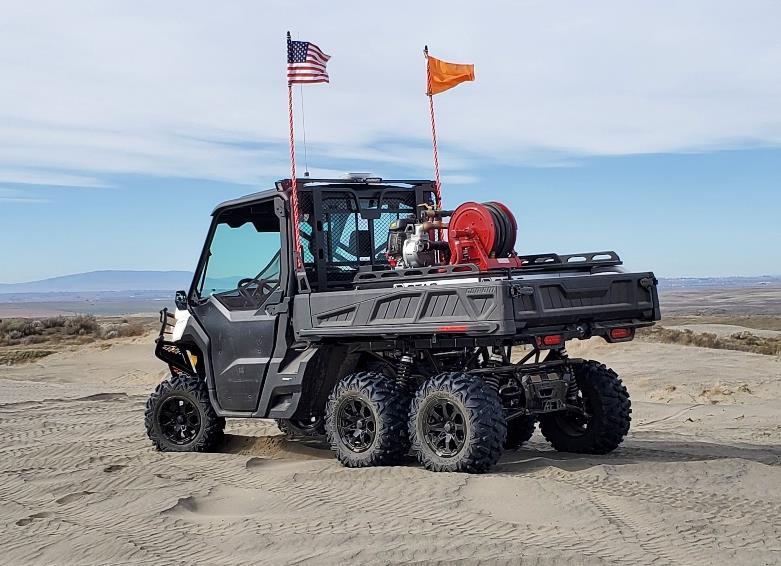

On August 2, the fire district attended National Night Out in Basin City. This was an opportunity for an entire county to come together for a barbeque and interact with local fire department and law enforcement in a social setting and discuss public safety.
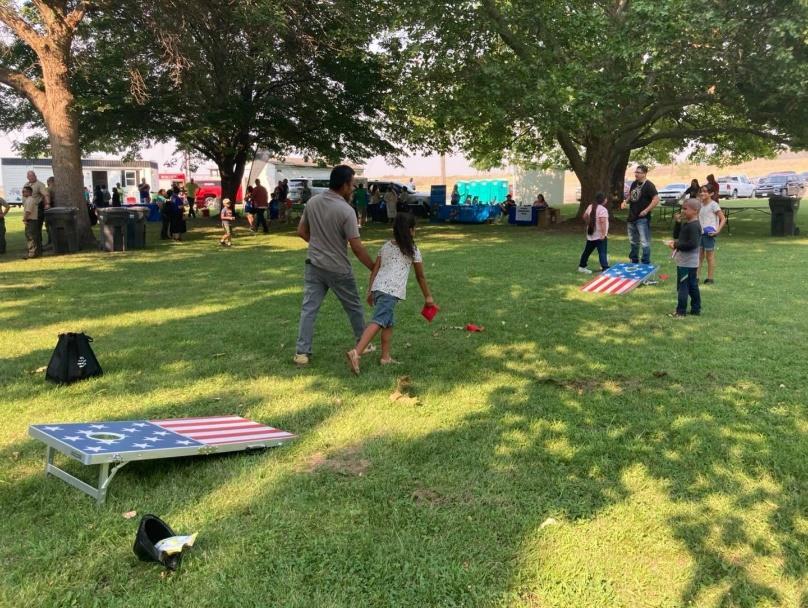

Two LUCAS 3® Chest Compression Systems from Stryker ®
One is located on M2326 at Station 36, the other on A2324 at Station 34.
Purchase Price: $14,489.00 each
Water Tender
Fouts Fire Water Tender.
Dealer - Cascade Fire & Safety in Yakima, WA




• Kenworth T480 chassis
• Paccar-450 HP diesel motor
• 3,000 gallon water tank
• Hale 750 GPM pump
W2324 is located at Station 34
Purchase Price: $344,677.75
Wildland Engine
2010 General Fire wildland body remounted on a 2021 Ford F-550 Four-Wheel Dr
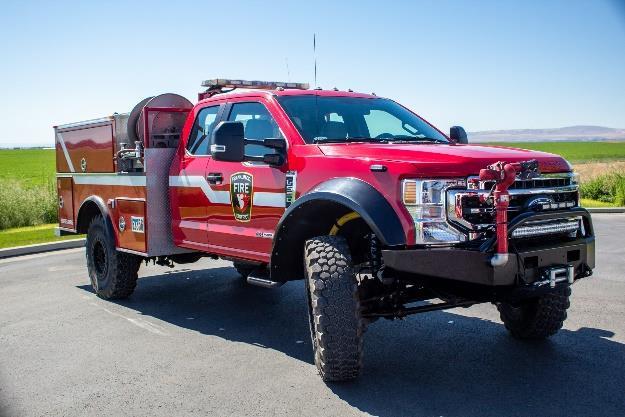
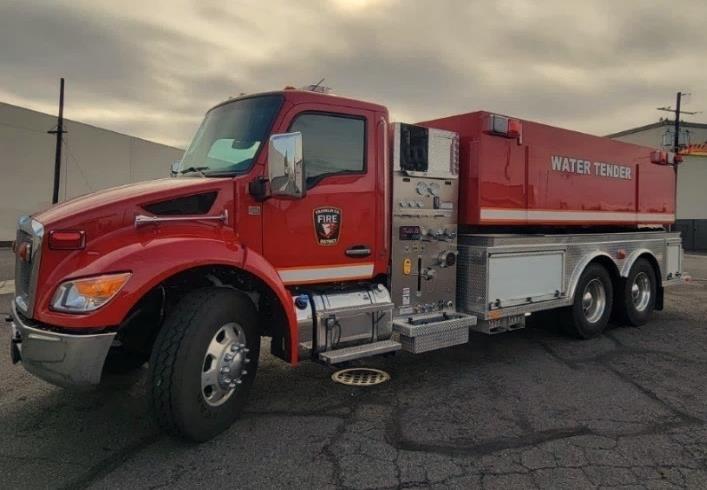
Aftermarket 2” off-road lift and 20” tires from DBL Designs in Hurst TX
• 500 gallon tank
• 125 gpm pump with foam
E2354 is located at Station 34 in the summer
Retrofit Price: $70,406.46

The Fire District continues to operate on a levy amount of no more than $1.50/1000 assessed value, and allowing an increase of 1% per year increase allowed by statute. A levy was passed in 2018 to allow the current levy rate to stay at $1.27 per 1000 assessed value.

The levy rate for taxes collected in 2022 is based on properties within the current boundaries of the District with assessed value of $1,925,837,756 00 The fire district’s current levy is approximately $1.04 per $1,000 of assessed value.
The Fire District issued general obligation bonds for construction of the addition to Station 36 in the amount of $1,015,000.00. An annual payment of principal and interest was made in 2022 for $82,825 00. The bond debt service will be paid off in 2027 at a value of $1,224,451.38, which is $1,015,000 principal plus $209,451.38 interest calculated at 2.4% per annum.



The Fire District received three grants in 2022. Volunteer Fire Assistance Grants Administered by Washington State Department of Natural Resources (DNR) through funding from the U.S. Department of Agriculture

The Volunteer Fire Assistance Grant Program is administered in two phases annually:
Phase 1 Grant – Personal Protective Equipment (PPE) and other fire equipment can be acquired annually through DNR fire cache at a 50% cost savings. The Fire District purchased wildland PPE at a value of $1,609.84.
Phase 2 Grant – Equipment can be acquired annually through DNR or used to build fire equipment in support of wildland firefighting. The Fire District is building a Type 4 wildland engine on surplus military chassis. Phase 2 Grant match is $12,000.00
The EMS training grant provides approximately $1,125.00 annually to augment our EMS training program.
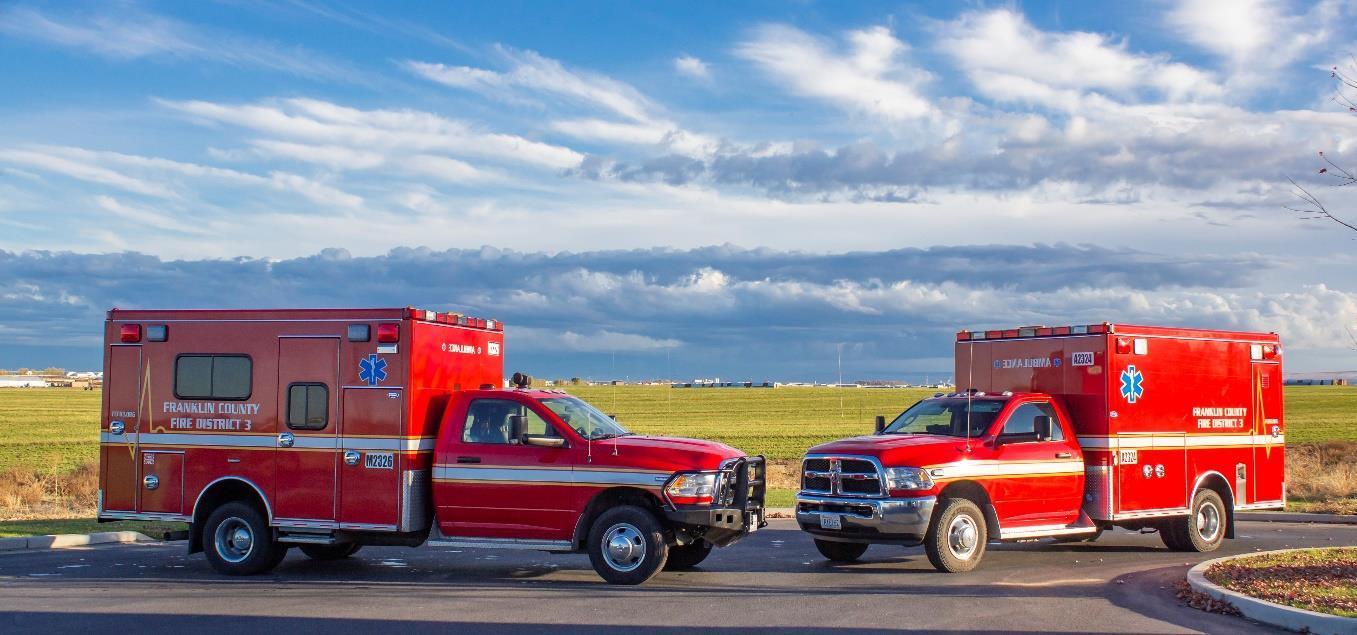



The Fire District had a successful year in training, incidents and public education activities. In addition, the District remains active within the community by participating in various events, and working with our neighboring fire agencies on a daily basis. Our relationship with those agencies remains strong and a priority to the District.
With the increase in population in our District and neighboring communities, the demand for service continues to increase not only for us, but our neighbors. Cooperating with the City of Pasco, Walla Walla Fire District #5 and the fire agencies in Benton County strengthens your fire district and make us an integral part of the Tri City first response community.
No single fire agency can handle all major emergencies alone or afford to maintain our own training facility. Our Automatic Aid Agreement allows us to collaborate regionally and is based on the premise: it’s not about us, but the community we all serve.

Franklin County Fire District #3 Commissioners
 Gary Larsen Glen Clifford Todd Blackman Board Chair
Gary Larsen Glen Clifford Todd Blackman Board Chair